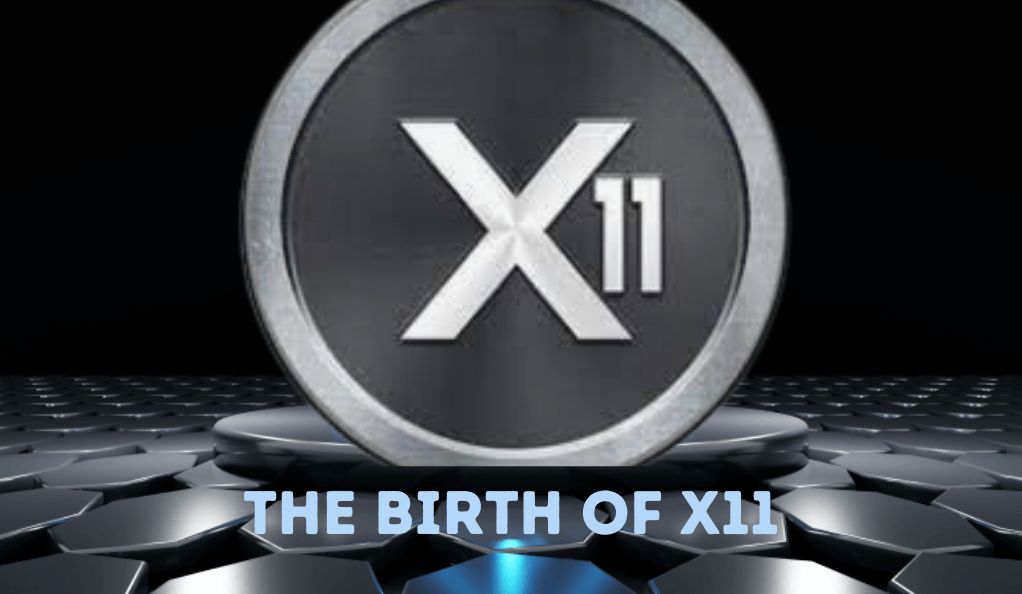In the ever-evolving world of cryptocurrency, the need for robust security and efficient processing has been paramount. This drive for innovation led to the inception of X11, an algorithm that would go on to influence numerous blockchain platforms and projects. But where did it all begin? Let’s trace back to the origins of this groundbreaking algorithm.
Background of the algorithm’s inception
X11 wasn’t born in isolation. Its development was a response to the limitations observed in earlier cryptographic algorithms. Cryptocurrencies initially relied heavily on SHA-256 (used by Bitcoin) and Scrypt (utilized by Litecoin). However, as the crypto ecosystem matured, the need for a more diversified and robust algorithm became evident. An over-reliance on a single hashing function could make the entire system vulnerable if that specific function was ever compromised.
The need and the community’s quest for a more secure and efficient algorithm
Given the decentralized ethos of the cryptocurrency community, the search for a solution was a collective effort. This collaborative endeavor aimed at achieving two main objectives:

- Enhanced Security: By using multiple cryptographic functions, the risk associated with the potential vulnerability of a single function could be mitigated. If one function was found to have a weakness, the remaining functions would still provide a safety net.
- Energy Efficiency: Mining cryptocurrencies is notoriously energy-intensive. The community sought an algorithm that would reduce the energy footprint of mining operations while still ensuring security and transaction speed.
The Birth of X11: What Makes It Unique?
X11, with its intricate blend of eleven cryptographic functions, stands as a testament to the forward-thinking approach of the crypto community. But what is it about this algorithm that sets it apart from its predecessors and contemporaries?

The Combination of 11 Different Cryptographic Functions
At the heart of X11 is its multifaceted architecture. Unlike many of its predecessors that employed a singular cryptographic function, X11 incorporated eleven. These are:
Blake
BMW
Groestl
JH
Keccak
Skein
Luffa
Cubehash
Shavite
SIMD
Echo
Each function offers its own set of strengths, and by weaving them together, X11 aimed to fortify its defense against potential vulnerabilities. The logic was clear: even if one or several of these functions were compromised, the overall integrity of the algorithm would remain intact, protected by the remaining functions.
How This Blend Promised Enhanced Security and Protection Against Potential Threats
Security in the crypto world isn’t just about preventing external hacks; it’s about ensuring the stability and reliability of the internal system. X11’s multifunctional approach provided a two-fold advantage:
- Diverse Defense Mechanisms: With different cryptographic functions, the chances of simultaneous vulnerabilities or breaches were significantly reduced. An attacker would need to find and exploit weaknesses in all eleven functions to compromise the system.
- Future-Proofing: Cryptography is a field of continuous evolution. By incorporating multiple functions, X11 hedged against the obsolescence of any one particular function. If advancements in cryptanalysis deemed one function less secure over time, the system still had ten other layers of defense.
Driving Forces: The Community’s Role in X11’s Evolution
The rise and success of X11 wasn’t a solitary endeavor. It was driven by a collective force — the vibrant and dynamic cryptocurrency community. Their contributions, insights, and drive played a pivotal role in the evolution and adoption of X11.
Open-source Nature and Community Collaboration
The open-source ethos that permeates much of the crypto world was instrumental in the development and refinement of X11. This open framework allowed enthusiasts, developers, and cryptographers from around the world to contribute to the algorithm, suggest improvements, and ensure its robustness. By opening the doors to collective intelligence, X11 was continuously refined, with potential pitfalls being identified and rectified swiftly.
Important Contributors and Their Pivotal Roles
While the entire community played a part, some individuals and groups made significant impacts on X11’s trajectory:
- Evan Duffield: Often credited as the primary creator of X11, Duffield’s contributions extend beyond just the initial creation. He championed the need for a more complex yet efficient algorithm, and his leadership drove many early adopters to integrate X11 into their projects.
- Open-Source Developers: A myriad of developers, many of whom remained anonymous, contributed to X11’s codebase, enhancing its functionality and security. Their combined expertise ensured that the algorithm was always at the forefront of cryptographic innovation.
- Crypto Forums and Platforms: Platforms like BitcoinTalk and GitHub became the primary hubs for discussions around X11. Feedback loops established on these platforms ensured that any issues or vulnerabilities were quickly identified and rectified.
The collaborative spirit of the crypto community meant that X11 was more than just an algorithm; it was a living project, continually adapting and evolving based on feedback and the changing landscape of blockchain technology.
| Cryptocurrency | Adoption of X11 Algorithm | Impact on X11 Algorithm |
|---|---|---|
| Darkcoin (now Dash) | Used X11 to enhance privacy features and transaction speeds. | Played a pivotal role in showcasing X11’s practical benefits. |
| CannabisCoin | Integrated X11 into its system. | Contributed to the broader understanding of the X11 algorithm. |
| StartCoin | Incorporated X11 into its system. | Contributed to the optimization of the X11 algorithm. |
| MonetaryUnit | Utilized the X11 algorithm in its system. | Contributed to the broader understanding of X11’s potential. |
Challenges and Controversies: Bumps on the Road
Like any technological innovation, X11’s journey wasn’t without its share of challenges and controversies. While it brought about numerous advantages and marked significant progress in the realm of cryptographic algorithms, it also faced its fair share of skepticism and hurdles.
Criticisms faced by X11
- Complexity Over Security: Some critics argued that the combination of eleven different cryptographic functions was more about complexity than genuine security enhancement. They contended that adding more functions could introduce more potential points of failure.
- Short-term ASIC Resistance: One of the touted benefits of X11 was its resistance to ASIC (Application-Specific Integrated Circuit) mining, which can lead to mining centralization. However, as with other algorithms, ASICs designed for X11 eventually entered the market, leading some to believe that the algorithm’s ASIC-resistant claims were overstated.
Technological and Community-driven Hurdles
- Performance Variability: Due to its multifaceted nature, X11’s performance could vary based on the specific implementation or the hardware being used. This led to inconsistencies in mining outputs, especially in the early days.
- Adoption Resistance: While many in the crypto community embraced X11, others were hesitant, often due to allegiance to other algorithms or concerns about the newness and untested nature of X11.
- Evolution of Cryptanalysis: As cryptanalysis techniques evolve, vulnerabilities previously unidentified in cryptographic functions might emerge. This ongoing challenge means that multi-algorithm systems like X11 need continuous monitoring and potential updating.
Overcoming ASIC Mining Centralization Concerns
One of the central challenges faced by X11 was the eventual development of ASICs tailored for it. While X11 was initially GPU-friendly, the introduction of these ASICs led to concerns about mining centralization. However, supporters of X11 argued that this was an inevitable progression seen in most cryptographic algorithms. Instead of resisting ASICs, they believed in adapting to this change, focusing on other methods to ensure decentralization and security.
X11 in Blockchain: Significance and Implementations
X11’s influence extends beyond just cryptocurrencies. Its impact on the broader blockchain ecosystem is profound, underlining its significance in the decentralized technology landscape.

- Enhanced Security Protocols: The multi-layered security provided by X11’s multiple cryptographic functions has been integrated into various blockchain platforms, enhancing their resilience against potential attacks.
- Diversified Mining: With X11’s unique structure, miners had the flexibility to choose between different mining strategies, depending on the individual strengths of each cryptographic function. This brought about a more democratic mining environment.
- Energy Efficiency: As the world became more conscious of the environmental impact of cryptocurrency mining, X11’s energy-efficient design became a highlight. Various blockchain projects seeking to reduce their carbon footprint turned to X11 as a viable solution.
Future of X11: What Lies Ahead?
With its foundational impact on the crypto and blockchain world, one might wonder: what’s next for X11? As with all technology, stagnation isn’t an option, and the same holds true for cryptographic algorithms.
Predictions for X11’s Role in the Next Era of Blockchain
- Integration with Advanced Technologies: As technologies like quantum computing edge closer to practical use, cryptographic algorithms will need to evolve. X11, with its multi-algorithmic structure, could integrate newer functions to stay ahead of potential quantum threats.
- Decentralized Applications (DApps) Adoption: As DApps become more prevalent, there’s potential for X11 to be integrated into their security protocols, offering users enhanced protection and efficiency.
- Innovative Forks and Versions: Just as X11 built upon previous algorithms, it’s plausible that new versions or forks of X11 might emerge, further optimizing the algorithm for specific use cases or challenges.
| Feature | Description |
|---|---|
| Functional Swaps | Functions less secure over time can be swapped out for newer, more robust cryptographic algorithms. |
| Customizable Implementations | Future blockchains may allow developers to customize their use of the eleven functions in X11 or add more based on specific project needs. |
| Enhanced ASIC Collaboration | Future iterations of X11 may collaborate with ASIC manufacturers to balance decentralization and mining efficiency. |
The Ongoing Quest for Better Security and Efficiency
At its core, the ethos behind X11 will always be about improving security and efficiency. As threats become more sophisticated and the demands on blockchain technology increase, X11, or its descendants, will continue to strive for optimization. Whether through integrating newer cryptographic functions, enhancing its energy efficiency, or finding ways to make mining more accessible, the journey of X11 is far from over.
Conclusion: The Continuing Legacy of X11
From its humble beginnings as a community-driven initiative, X11 has grown into a formidable force in the blockchain universe. Its unique blend of multiple cryptographic functions addressed immediate concerns of security and efficiency, but its legacy extends far beyond that. As a testament to the power of collaboration and innovation, X11 serves as a reminder of what’s possible when a community comes together with a shared vision. And while the crypto landscape will continue to evolve, the influence and ideals of X11 are sure to echo through future generations of blockchain technologies.
At axerunners.com, our goal is to furnish well-rounded and trustworthy information regarding cryptocurrency, finance, trading, and stocks. Nonetheless, we avoid providing financial advice and instead encourage users to conduct their own research and meticulous verification.
Read More













